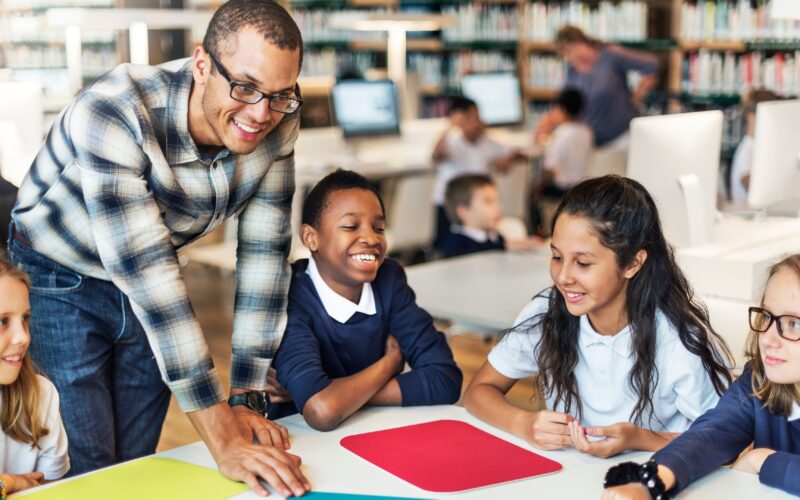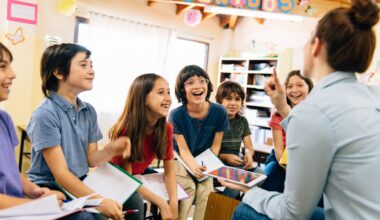Creating a confident classroom starts with understanding that learning is not just about academic content—it’s also about emotional growth, resilience, and self-belief. Social Emotional Learning (SEL) plays a key role in shaping these qualities. By promoting SEL in the classroom, teachers empower students with the tools they need to believe in themselves, face challenges head-on, and reach their full potential.
Why Student Confidence Matters
Confidence in the classroom isn’t just about raising hands or acing tests—it’s about helping students feel capable, supported, and motivated to try. When students believe in themselves, they’re more likely to take academic risks, bounce back from setbacks, and stay engaged in learning. That’s where Social Emotional Learning comes in.
SEL teaches students how to manage emotions, build healthy relationships, and develop the self-awareness needed to grow. These skills form the foundation for both academic achievement and lifelong success.
The Power of a Growth Mindset
One of the most effective ways to boost confidence is by promoting a growth mindset—the belief that intelligence and abilities can improve through effort and persistence. When students view mistakes as opportunities for learning, they’re more willing to take on challenges and keep going when things get tough.
How to support a growth mindset:
- Teach it explicitly: Help students understand the difference between a fixed and growth mindset.
- Model it yourself: Share examples of how you’ve learned from your own mistakes.
- Celebrate effort, not just results: Praise hard work, strategy, and perseverance.
- Encourage self-reflection: Have students evaluate their own learning to see how far they’ve come.
- Set manageable goals: Guide students to break big tasks into smaller, achievable steps.
By embedding growth mindset principles into daily classroom life, you’re showing students that success comes from effort—not perfection.
Peer Encouragement: Building Confidence Together
Confidence doesn’t develop in isolation. Positive peer interactions can boost self-esteem and reinforce a sense of belonging. Here are five peer-based strategies that help build a supportive classroom culture:
- Collaborative Projects: Group work encourages students to share ideas, learn from each other, and experience team success.
- Peer Tutoring: Students who teach or help their peers reinforce their own knowledge and gain confidence in their skills.
- Group Discussions: Sharing thoughts in a structured setting helps students practice speaking up and respecting diverse opinions.
- Peer Feedback: Thoughtful, constructive feedback from classmates builds critical thinking skills and emotional maturity.
- Celebrating Achievements: Create opportunities for students to recognize and celebrate each other’s wins—big and small.
A classroom rooted in collaboration creates a community where everyone lifts each other up.
Constructive Feedback: A Pathway to Growth
Feedback is a powerful tool in the hands of a skilled teacher. When delivered thoughtfully, it builds self-awareness, reinforces progress, and guides students toward improvement.
Effective feedback strategies include:
- Be specific and actionable: Rather than saying “good job,” try “You explained your idea clearly by using that real-life example.”
- Be timely: The sooner students receive feedback, the more meaningful it becomes.
- Use the feedback sandwich: Start with a positive note, follow with constructive suggestions, and close with encouragement.
- Set growth goals: Collaborate with students to define personal learning targets, then reflect on their progress together.
Constructive feedback empowers students to see themselves as learners with the power to grow.
The Role of Social Emotional Learning
SEL is not an “add-on” to the school day—it’s a core element of classroom success. By weaving SEL into everyday lessons, routines, and interactions, teachers help students build emotional strength and social skills that directly influence confidence.
Key SEL components that support confidence include:
- Resilience training: Teach students how to handle setbacks and come back stronger.
- Self-awareness: Help them understand how thoughts and feelings affect actions.
- Emotional regulation: Show strategies to stay calm, focused, and positive in tough situations.
Through SEL, students not only develop academic skills but also the emotional tools they need to thrive in and out of school.
Confidence-Building Classroom Strategies
Ready to take action? These teacher-tested strategies help create a classroom where confidence grows daily:
- Promote a growth mindset: Normalize mistakes and praise progress.
- Encourage peer collaboration: Let students work in teams and support each other.
- Set realistic, step-by-step goals: Break big challenges into smaller, manageable tasks.
- Create a safe, inclusive environment: Make every student feel seen, heard, and respected.
- Offer varied learning experiences: Mix up lessons with hands-on activities, discussions, and creative work.
- Recognize effort: Applaud resilience, even if the final result isn’t perfect.
- Practice reflection: Give students time to think about their progress and set new goals.
These approaches help students feel in control of their learning and proud of what they accomplish.
Positive Reinforcement: Encouraging Confidence with Recognition
Positive reinforcement is a simple yet powerful way to encourage desired behaviors and attitudes. When students know their efforts are seen and appreciated, their confidence and motivation grow.
Benefits of positive reinforcement:
- Boosts self-esteem
- Promotes motivation
- Reinforces learning behaviors
- Builds trust between teacher and student
Examples of positive reinforcement:
- Verbal praise: Be specific—“I really noticed how you helped your classmate today.”
- Reward systems: Use classroom points, tokens, or privileges to celebrate effort.
- Peer recognition: Let students highlight each other’s successes.
- Goal setting and celebration: Acknowledge when a student meets a personal milestone.
The key is consistency—small moments of encouragement add up to big results.
Why SEL Is the Foundation for Student Empowerment
Social Emotional Learning is more than a framework—it’s a mindset that shifts how we view student development. SEL fosters resilience, promotes self-awareness, and equips students with the skills they need to face life’s challenges with courage.
By teaching SEL alongside academic content, educators ensure that students feel emotionally safe, socially connected, and confident in their ability to succeed.
Final Thoughts
Empowering students with confidence is not a one-time lesson—it’s a daily practice. Through Social Emotional Learning, a growth mindset, and a classroom culture built on encouragement and support, teachers can unlock each student’s full potential.
Whether it’s celebrating a small victory, giving constructive feedback, or fostering peer collaboration, every moment counts. And with the right tools and mindset, every teacher has the power to build a classroom where students don’t just learn—they thrive.



